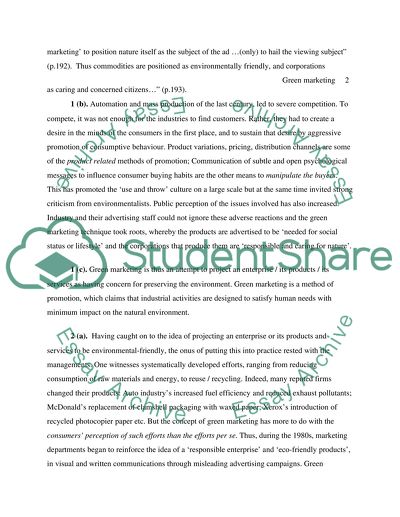Cite this document
(The Green Marketing Case Study Example | Topics and Well Written Essays - 2000 words, n.d.)
The Green Marketing Case Study Example | Topics and Well Written Essays - 2000 words. https://studentshare.org/marketing/1540688-green-marketingis-it-ethical-to-use-green-marketing-just-to-convince-customers-to-buy-the-companies-products
The Green Marketing Case Study Example | Topics and Well Written Essays - 2000 words. https://studentshare.org/marketing/1540688-green-marketingis-it-ethical-to-use-green-marketing-just-to-convince-customers-to-buy-the-companies-products
(The Green Marketing Case Study Example | Topics and Well Written Essays - 2000 Words)
The Green Marketing Case Study Example | Topics and Well Written Essays - 2000 Words. https://studentshare.org/marketing/1540688-green-marketingis-it-ethical-to-use-green-marketing-just-to-convince-customers-to-buy-the-companies-products.
The Green Marketing Case Study Example | Topics and Well Written Essays - 2000 Words. https://studentshare.org/marketing/1540688-green-marketingis-it-ethical-to-use-green-marketing-just-to-convince-customers-to-buy-the-companies-products.
“The Green Marketing Case Study Example | Topics and Well Written Essays - 2000 Words”. https://studentshare.org/marketing/1540688-green-marketingis-it-ethical-to-use-green-marketing-just-to-convince-customers-to-buy-the-companies-products.


